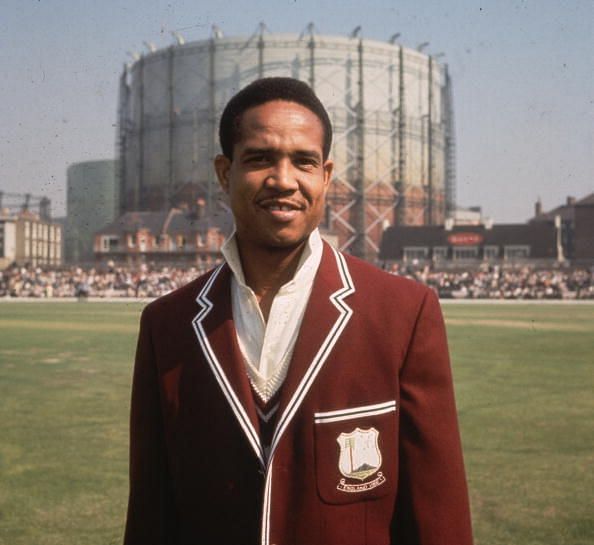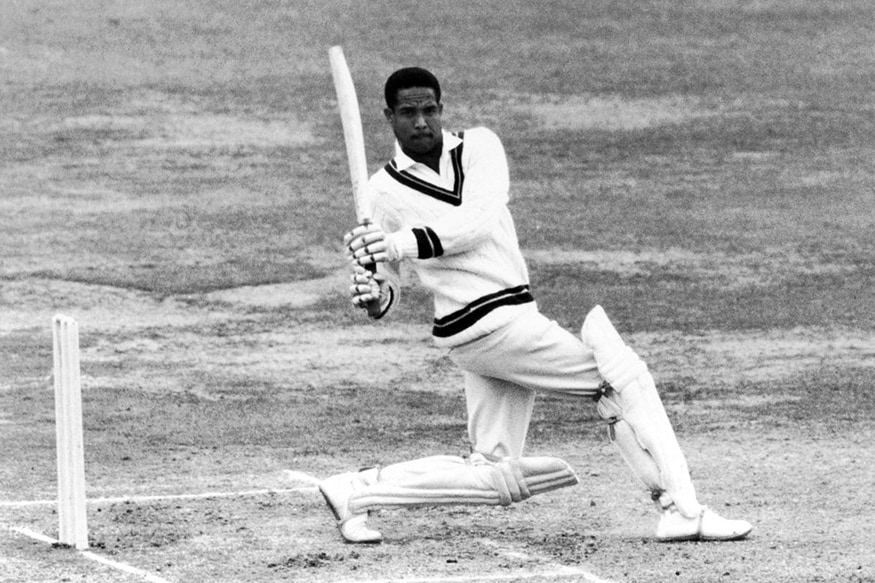When Garfield Sobers strode to wicket or bowled with sublime ease, cricket witnessed physics briefly suspended in service of sporting poetry – manifesting grace rivaling dance yet potency yielding unprecedented statistical bounties over two decades facing world bowling elites subdued by Sobers’ genius batsmanship and versatile bowling sorcery.
At one moment the ball vanished, then reappeared soaring over boundaries before his lithe frame glided bowling bombs bamboozling rivals – all interspersed by regal laughs hinting more spectacle awaited.
Decades later benchmarks set stay unmatched with records merely capturing slivers of Sobers’ astonishing mastery mastering cricket’s myriad arts simultaneously better than specialists themselves.
Article Highlights
Hide- Garfield Sobers was born on July 28, 1936, in Bridgetown, Barbados, and was raised in a cricket-loving family.
- He showed early talent in both batting and bowling and made his debut for Barbados at the age of 16.
- Sobers made his first-class debut for the Barbados cricket team at age 17 and his Test debut for the West Indies at age 18, setting a world record by scoring 365 not out in a Test match in 1958.
- He excelled in batting, bowling, and fielding, showcasing unparalleled all-round capabilities, and captained the West Indies in 39 Test matches, instilling confidence and ambition in his team.
Yet deeper still thrived Sobers’ humanism nurturing prospects, a humility belying supreme proficiency across every discipline. Such multi-dimensional excellence fused with character illuminated paths for succeeding West Indian greats while stewarding the game’s ethical safekeeping beyond playing years. Today Garfield Sobers persists an icon of skill and heart upholding cricket’s higher ideals.
Early Life and Background
Born on July 28, 1936, in Bridgetown, Barbados, Sir Garfield St Auburn Sobers emerged from modest beginnings to become one of cricket’s most prodigious talents.
His journey to international acclaim began in a colonial Caribbean environment, where opportunities for self-advancement were often stifled by systemic constraints.
Nevertheless, Sobers’ early life was steeped in cricket, a sport that would not only become his vocation but also a platform for challenging and redefining the boundaries of athletic excellence.
Dale Steyn
When Dale Steyn hurtled down runways, shadow eclipsing sightscreens forewarned imminent assaults ... Read More
Sobers’ innate prowess was evident from his early days playing cricket in the streets of Bridgetown. Despite the limited resources at his disposal, he developed a multifaceted skill set that would later astonish the cricketing world.
His early exposure to cricket was not merely coincidental; it was a cultural given, as the sport was deeply ingrained in the socio-cultural fabric of the West Indies. This period of formative play honed his natural abilities, setting the stage for his later exploits on the international scene.
Analyzing Sobers’ background reveals a tapestry of influences: colonial legacies, local cricketing culture, and personal determination intertwining to forge a cricketer who would transcend the sport’s traditional paradigms.
His ascendancy not only illustrated the potential within an individual but also symbolized the aspirations of a region seeking to assert its identity and capability on the global stage.
Garfield Sobers: Rise to Cricketing Prominence
Building upon the foundation of his early experiences in Bridgetown, Sir Garfield Sobers rapidly ascended the ranks of international cricket, showcasing a mastery that would soon elevate him to legendary status.
His rise was not merely a function of talent but a testament to his unwavering commitment to excellence and the liberation of his potential as a cricketer.
Analyzing his ascent, the following milestones are noteworthy:
- Debut at Seventeen: Sobers made his first-class debut for the Barbados cricket team at a tender age of 17, immediately signaling his prodigious talent.
- International Recognition: His Test debut for the West Indies followed at age 18, against England in 1954, where he made an indelible mark on the game.
- Record-Breaking Performances: In 1958, Sobers set a world record by scoring an unprecedented 365 not out in a Test match, an achievement that stood for 36 years.
- All-Round Capabilities: His versatile skills were unmatched, excelling in batting, bowling, and fielding, which made him a cricketer of unparalleled all-round capabilities.
The analytical dissection of Sobers’ formative cricketing years reveals a trajectory steeped in relentless improvement and a burning desire to transcend the limitations set before him, inspiring countless others who sought their own form of emancipation on the cricket field.
Record-Breaking Performances
Sir Garfield Sobers’ record-breaking innings of 365 not out against Pakistan in 1958 shattered the previous world record for the highest individual score in a Test match, a testament to his extraordinary batting prowess and strategic acumen.
This monumental achievement, etched in the annals of cricket history, underscored Sobers’ ability to blend aggressive shot-making with disciplined endurance.
His innings spanned more than 14 hours at the crease, demonstrating not only technical mastery but also remarkable physical stamina and mental fortitude.
Sobers’ record stood for 36 years until it was surpassed by Brian Lara in 1994. However, the context of Sobers’ innings, devoid of modern protective gear and against a formidable bowling attack, amplifies its significance.
His performance exemplified liberation from the constraints of conventional cricketing techniques, paving the way for future generations to explore the limits of individual scoring in the sport.
Moreover, Sobers’ knock was instrumental in propelling the West Indies to an imposing total, ultimately facilitating an innings victory.
The innings was more than a personal triumph; it was a strategic masterstroke that contributed to the dominance of the West Indies in the world of cricket during that era.
Garfield Sobers: Leadership and Captaincy
Beyond his record-breaking feats with the bat, Garfield Sobers further distinguished himself through his astute leadership and captaincy, which left an indelible mark on West Indies cricket.
Sobers’ captaincy was characterized by a blend of strategic foresight, unwavering commitment, and an ability to inspire teammates towards collective success.
His leadership was not just about tactics and game plans, but also about fostering a spirit of resilience and liberation among players who looked to him for direction.
Sobers’ tenure as a leader can be encapsulated by the following:
- Inspirational Guidance: Sobers captained the West Indies in 39 Test matches, instilling a robust sense of confidence and ambition in his team.
- Strategic Brilliance: With a tactical acumen, he outmaneuvered opponents, setting stages for memorable victories.
- Cultural Impact: As a captain, Sobers symbolized the rise of Caribbean pride, contributing significantly to the post-colonial identity of West Indies cricket.
- Legacy of Empowerment: His leadership extended beyond the field, empowering players to believe in their abilities and aspire for greatness.
In an analytical view, Sobers’ captaincy period from 1965 to 1972 was marked by not just statistical successes but also by the elevation of West Indies cricket’s global standing.
His leadership style was a beacon for players seeking to assert themselves on the international stage, thereby changing the face of cricket with a legacy that transcends numbers.
Legacy and Statistical Breakdown
Garfield Sobers’ legacy in cricket is not only etched in the annals of history through his transformative leadership but also quantifiable through a rich tapestry of statistical achievements that underscore his mastery of the game.
His career, sprawling across two decades, featured a staggering accumulation of runs, wickets, and catches that bear testimony to his all-round prowess.
In Test cricket, Sobers amassed 8,032 runs in 93 matches with an impressive average of 57.78, including 26 centuries, which at the time of his retirement was a world record. His highest score of 365 not out against Pakistan in 1958 stood as the highest individual score in an innings for 36 years.
As a bowler, he captured 235 Test wickets, with a best of 6 for 73, exhibiting his versatility across multiple bowling styles—left-arm fast-medium, slow left-arm orthodox, and wrist spin.
Moreover, his fielding brilliance yielded 109 catches, underscoring his athletic finesse and sharp reflexes.
Beyond the raw data, Sobers’ statistics reveal a cricketer who could adapt and excel in any condition and against any opposition, further cementing his status as one of the game’s greatest all-rounders.
His statistical legacy, thus, is a beacon for cricketers seeking to transcend the ordinary, embodying the spirit of liberation from the constraints of specialized roles in the sport.
Final Thought
In conclusion, Sir Garfield Sobers stands as a towering figure in the annals of cricket, his career marked by extraordinary achievements and groundbreaking records.
His leadership and captaincy further solidified his reputation as a cricketer of exceptional skill and strategic acumen. Statistical analysis affirms his prowess, with impressive figures that underscore his all-round capabilities on the field.
Sobers’ legacy endures, encapsulating the epitome of cricketing excellence and leaving an indelible mark on the sport.

















